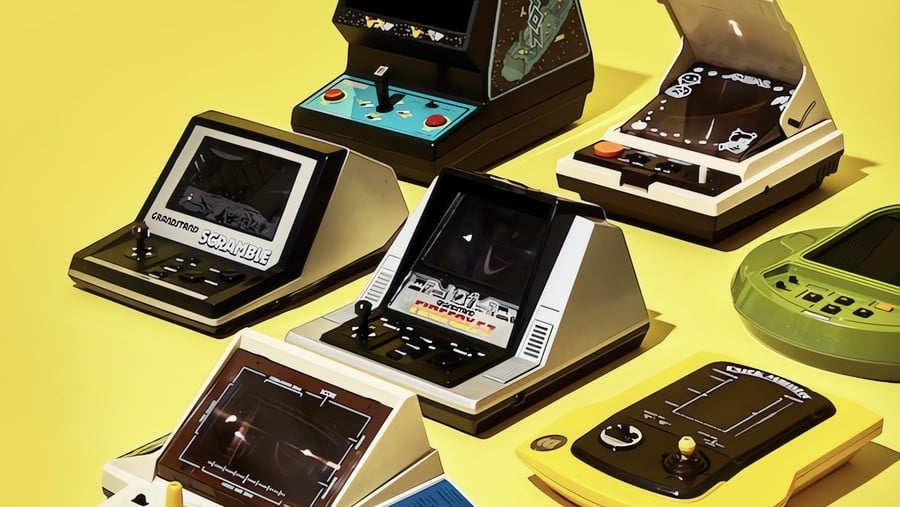
Home gaming in the 1980s, be that on consoles or home computers, seemed obsessed with achieving a version of arcade quality. Not necessarily in terms of visuals or audio, as the technology wasn’t there yet – there was no way to bring a genuinely arcade-accurate Space Harrier, Rastan or Gradius into the home without actually splashing out on a cabinet and finding room for it. But recreating the feeling of the best that coin-ops could offer, that was a mission that ran through 8- and 16-bit eras, alongside emerging gaming genres built for domestic play, until the mid-1990s really gave players hardware that could closely enough emulate what they’d experienced on nights out with a pocketful of change.
Alongside the incessant stream of compromised arcade ports and shameless clones that came to Atari, Nintendo and Sega systems in the late 1970s and into the 1980s was a procession of dedicated table-top toys that offered players compelling interpretations of hit coin-ops, but on very different technological terms. Similar to Nintendo’s Game & Watch line and other LCD-based playthings, these devices offered a single game (albeit often with different modes) and often used vacuum fluorescent displays for crisp and colourful gameplay.
They were often arranged like an arcade cab, with a joystick and action buttons in front of an angled screen. For a brief time, these games were as prominent on the pages of Argos catalogues, or on the shelves of a Woolworths or Tandy, as any of the gaming household names of then and now. Ultimately, the emergence of handheld consoles like the Game Boy and Game Gear would kill them off – but from about 1978 to 1985, these battery-powered mini-arcades were hugely popular.
So popular, indeed, that I’ve written a whole book about them: From Coin-Ops to Table-Tops. It’s on Kickstarter right now, so if anything below here rings an appealing bell, or you’re simply the kind of person who loves the weirder, lesser-told sides of gaming history, please consider taking a look.
Here are ten picks from the book which I feel represent a) amazingly enjoyable table-top electronic wonders that you can still enjoy in the 21st century, and b) wonderful foundations of any collection, should your next click after this page be towards eBay.
Demon Driver (Tomy, 1978)
Just to confuse things, Demon Driver doesn’t use a VFD screen, or even LCD. This Tomy-branded toy, also named Electronic Formula 1 and Black Racer elsewhere in the world, uses its two C-type batteries to power a looping track which rolls along beneath a cute little car, which you move left and right with an equally cute tiny steering wheel.
You have to dodge other vehicles on the road (if there's impact, and the game will stop, make an awful grinding sound and flash an angry red light at you) and basically keep going for as long as you can. It’s you against the clock, with the looping track counting up ‘laps’ – and the more laps you complete before the timer’s up, the better.
It’s essential to use gears to control your car’s speed, switching up and down to slip between rivals. Which is to say that simply putting the pedal to the metal is never a good tactic in Demon Driver.
Gunfighter (Bandai, 1980)
A simplified version of Taito’s Gun Fight arcade game of 1975, Bandai’s Gunfighter is a great VFD game for two players, offering intuitive fun for a few minutes at a time.
It’s not an officially licensed take on the coin-op that came before it, but the idea’s the same: two pistol-weidling cowboy sorts stand on each side of the screen and shoot at each other until one of them’s less full of holes than the other. You play this one sitting beside your opponent, shoulder to shoulder, as the controls are set to the left and right of a landscape-oriented screen – so if things get really frenzied, it’s not improbable that the conflict can spill out of the game and into your room.
One for the wannabe Young Guns, though City Slickers are welcome, too.
Astro Wars (Epoch/Grandstand, 1981)
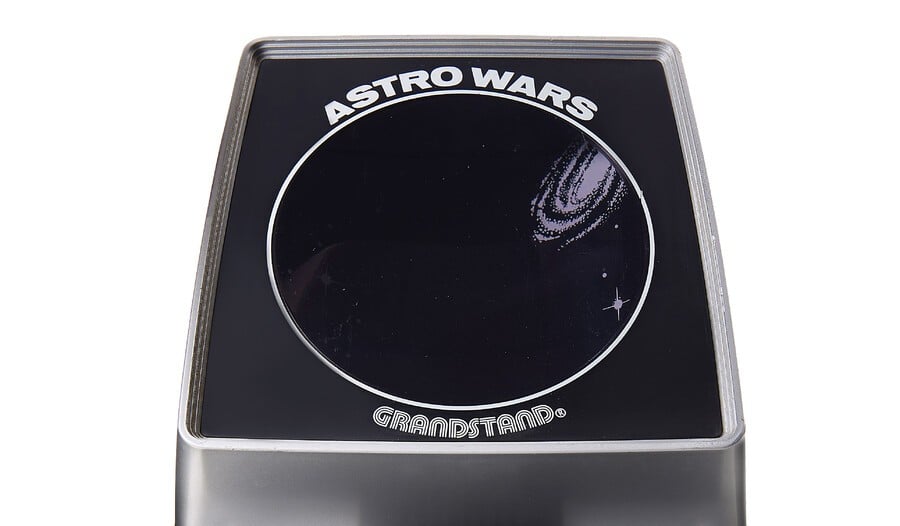
For many players who remember electronic table-tops for fondness, Astro Wars is one of the all-timers.
It was on sale for several years, from release in 1981 through to the middle of the decade, and could be found far and wide in British toy shops, electronics boutiques and department stores. Its high sales figures in the 1980s and durable build quality mean it’s a relatively easy machine to find today, although the asking prices for all of these electronic games have gone up in the last few years.
Astro Wars’ gameplay takes some pretty obvious cues from Galaxian (which is to say it rips Namco’s arcade hit off so brazenly that its Japanese Epoch release was titled Super Galaxian), with waves of enemies attacking from above your spaceship, but its varied levels and ship-docking bonus stages kept the action breathless enough for its ‘borrowed’ design to barely register as a negative.
Puck Monster (Gakken/CGL, 1982)
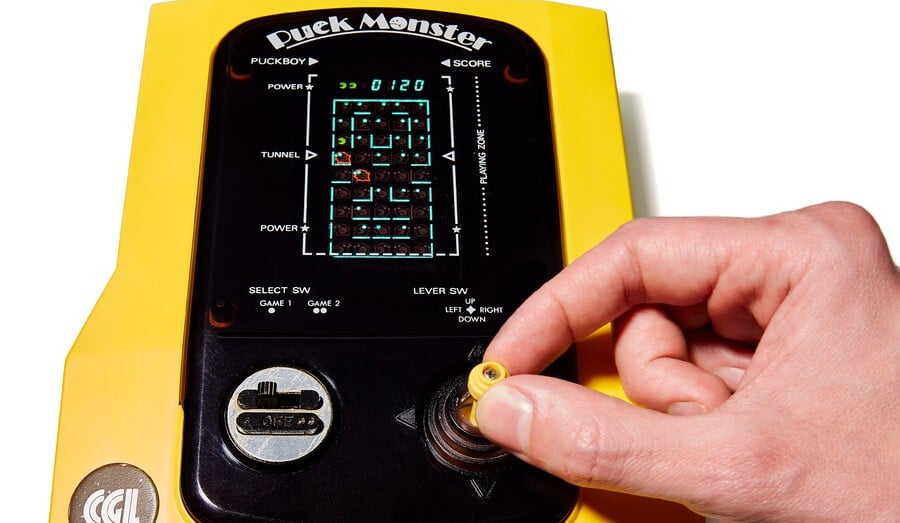
Namco’s Pac-Man and Midway’s Ms Pac-Man both received officially licensed VFD conversions from Coleco, but just as there were many console and computer clones of the dot-munchers in the early 1980s, there were also electronic table-top interpretations that skirted around legal issues by, essentially, looking the other way and putting their fingers in their ears.
One of the absolute best examples of these games is Puck Monster, which is, to all intents and purposes, Pac-Man under a barely changed name. Indeed, so well does Gakken’s creation capture the gameplay loop of Namco’s hit that in the wake of its original Japanese release as 1980’s Super Puck Monster, the game was licensed as the real deal in the United States, via Coleco.
This particular Puck Monster is slightly different to its predecessor but plays just as slickly, its bright yellow shell and ghost-chasing challenge as evergreen of appeal as ever in the here and now.
Scramble (Grandstand, 1982)
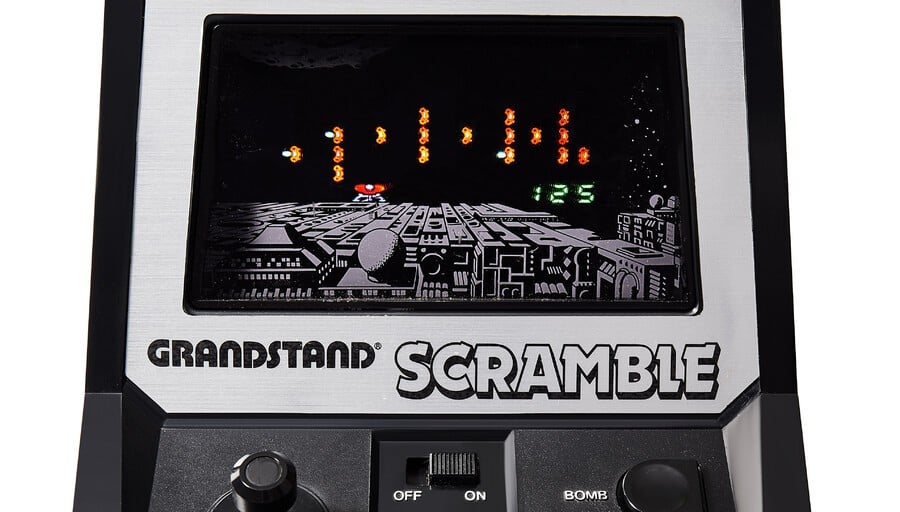
In 1981, Konami’s Scramble lit up arcades and became a legendary side-scrolling shoot ‘em up that hundreds of future games would be indebted to. That game was officially licensed for electronic table-top conversion in 1982, coming out via Tomy and Hales as Scramble, Rambler, Alien Attack and Astro Blaster (the name varied depending on where in the world you bought the game).
Grandstand’s Scramble is something different, however. This is a renamed import of the Japanese game by Epoch called Astro Command, which was also released for Epoch’s Cassette Vision console in 1983, which bears some similarities with Konami’s game but has an identity of its own through a wonderfully designed shell and fantastic screen graphics.
Its self-centering joystick offers precise four-way movement – a rarity on VFD side-scrolling shooters – and there are separate buttons for forward-facing shots and bombs, which wasn’t the case on the other table-top Scrambles.
File this one next to Astro Wars as an absolute Grandstand essential.
Tron (Tomy/Disney, 1982)
An ambitious table-top game that aimed to bring the multifaceted experience of the arcade title it was based on into bedrooms, swapping countless quarters for a handful of C batteries, Tron manages to cram in three distinct levels, all taken from the action of the movie it shares its name with.
First, there’s Light Cycles, where the player must guide their vehicle around the screen and ultimately send their opponent crashing into their solid light trail. Survive that, and it’s on to Disc Arena, recreating the Ring Game duel between Tron and Sark. Finally, it’s a battle against the Master Control Program for the chance to escape the game. Except, there is no escape: complete the three levels and they repeat, as many electronic table-tops do, encouraging you to build up as high a score as possible.
A beautifully made toy encased in smoky grey plastic and great fun to play, Tron’s not cheap to come by but is well worth the investment for anyone seriously interested in the best these games have to offer.
Firefox F-7 (Grandstand, 1983)

Rather than have anything to do with the 1982 movie Firefox, this space-combat game is largely based on the Death Star trench run at the end of the original Star Wars, something that’s made clear both in the enclosed level design (where you’re penned in by ‘walls of radiation’) and the TIE-like enemies you face off against.
Firefox F-7 even lifts some of the Star Wars score for one of its bleepy little jingles, with another quite clearly ripped off from Thunderbirds. Despite all of this outright plagiarism, F-7 is a great game, where speed and accuracy rewards you with greater points and playing safely just isn’t an option.
Outside of the UK it could also be found under the names Galaga X6 and Astro Thunder 7, but it’s the unit marked Firefox F-7 you’re more likely to find down your local car boot sale. And if you do, for goodness’ sake, grab it.
Donkey Kong Jr. (Nintendo, 1983)
One of four table-top-styled Game & Watch releases in 1983 alongside Mario’s Cement Factory, Popeye and Snoopy, this delightfully diminutive version of Nintendo’s arcade smash manages to pack in plenty of exciting gameplay.
You probably know the story here: Mario’s gone from hero in the original Donkey Kong to villain for the sequel, and Kong Jr. must navigate all manner of obstacles and traps, swinging on vines and avoiding a river dunking, to free his dad from the maniacal plumber (who, throughout this version, doesn’t seem at all bothered that his captive’s about to escape).
Unlock four chains by timing Jr.’s moves just so and DK will be free – only for the game to loop, enabling the player to build up their score. Unlike many table-tops of the era, Nintendo’s much-desired quartet don’t feature VFD screens. Instead, all four games require an overhead light source, the rays from which reflect off an internal mirror to illuminate a coloured LCD.
Not one for playing under the bedsheets when you’re meant to be asleep, then.
Zaxxon (Coleco, 1983)
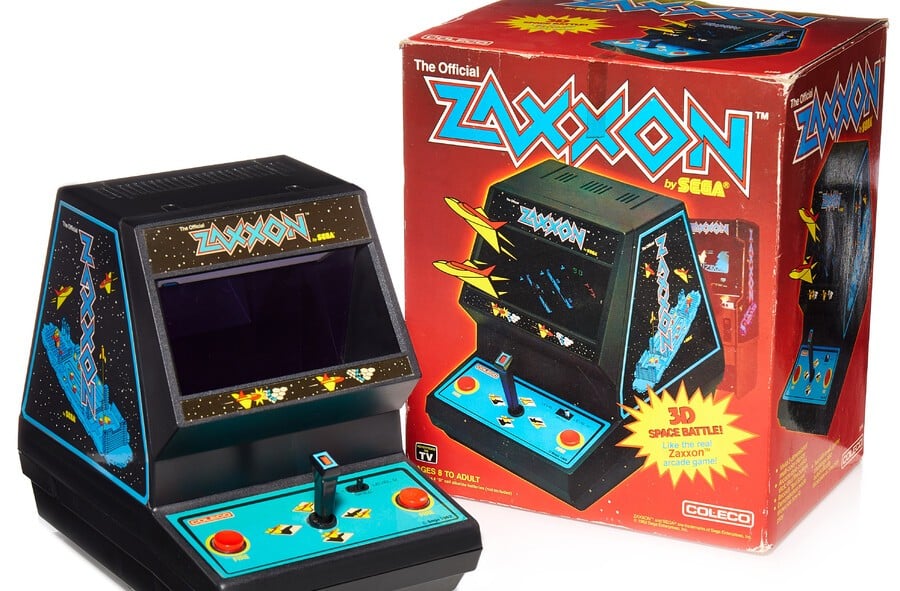
An officially licensed version of the Sega arcade of 1982, Coleco’s power-hungry table-top – four D-types are needed here – is something of an engineering marvel, using a pair of VFD screens simultaneously to recreate the isometric shooting action of the original game.
Not to be confused with another table-top take on Zaxxon put out by Bandai, which switched perspective to behind your ship, Coleco’s game feels as close to the real deal as anyone then or now could expect from the technology in front of them.
It’s tricky to get used to, with the joystick controls fairly intuitive given how your ship moves erratically on screen, and you will crash out frequently in your first few minutes of play, but the absolute audacity of even trying to remake Zaxxon in this manner deserves any Sega fan’s attention.
This might be the pinnacle of table-top VFD presentation.
Star Force (Epoch/Grandstand, 1984)
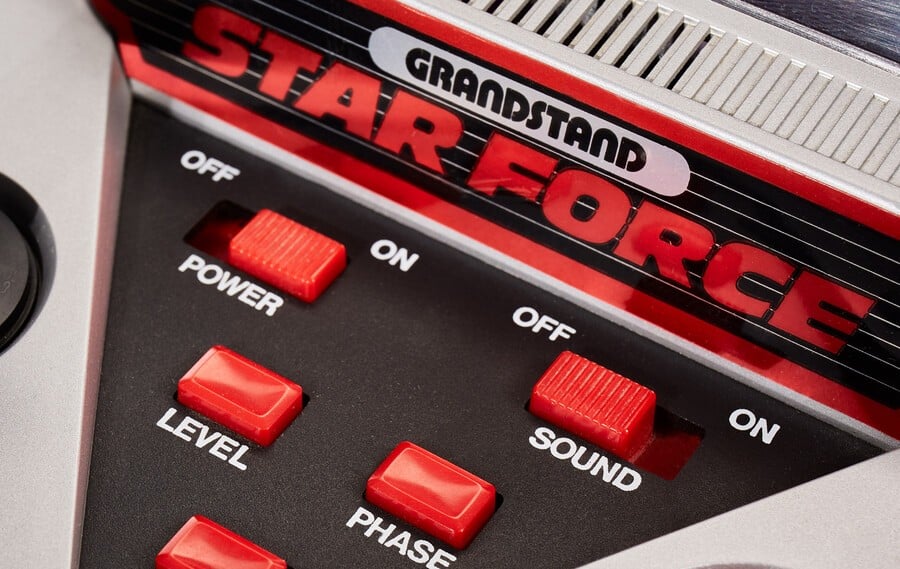
If Zaxxon represents the smartest use of VFD technology in these games, Star Force is the game that absolutely maximises its single-screen potential.
This semi-sequel to Astro Wars uses a brilliant background effect to simulate speeding up the screen, and enemies don’t simply appear before your ship to be blasted but all around you, which is where sideways-facing missiles come into their own.
To look at on a shelf this is a treat, too, with an oversized (and overdesigned!) joystick unlike any others amongst table-top games, and gorgeous black, silver and red colour scheme.
Like Astro Wars before it, Star Force’s gameplay is liberally pinching elements from Galaxian, but you won’t care about that when you’re in the thick of its high-intensity sci-fi dogfights.
From Coin-Ops to Table-Tops: The Essential Electronic Games is funding on Kickstarter now and is due to be published by Numskull Designs in early 2024. Its pages include deeper dives on these ten games and many more besides, alongside all-new photography of the original machines for all those nostalgia-piquing details.
